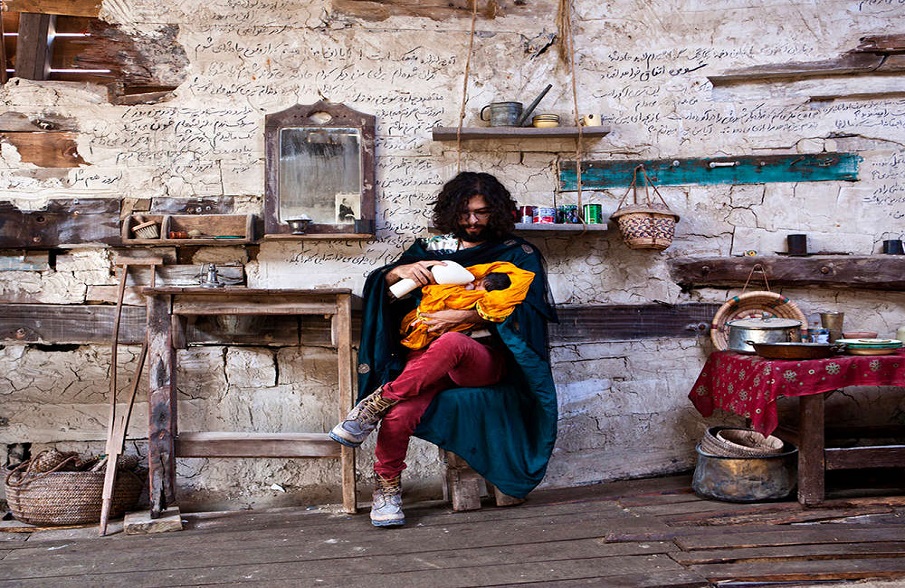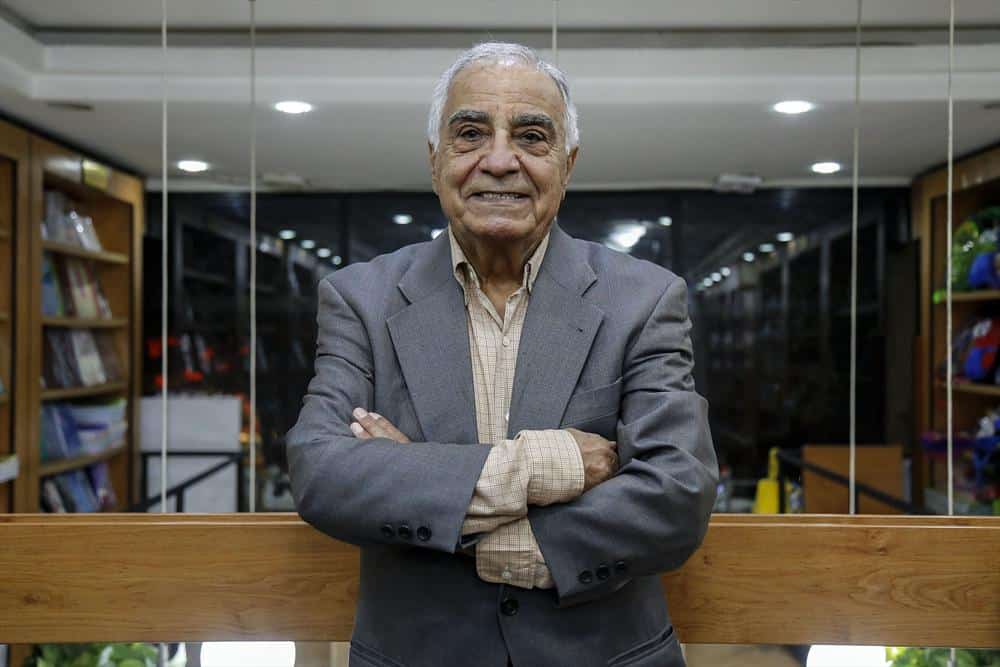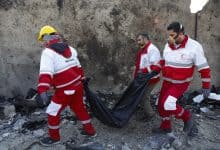
چه فرقی می کند «ولنتاین» باشد یا «سپندارمذگان» ؟! اگر می خواهید علاقه خود را ابراز کنید، هر ساعتی از شبانه روز و هر وقتی از سال، زمان خوبی است.
اما اگر:
دنبال بهانه می گردید، خجالتی هستید، یا می خواهید همرنگ جماعت باشید و دنبال شریک جرم می گردید، روز «ولنتاین» فرصت خوبی است. از ما گفتن بود. چهار روز هم بین این دو مناسبت بیشتر فاصله نیست، اگر به «ولنتاین» نرسیدید، تا «سپندارمذگان» چند روزی فرصت دارید.
اگر هم در جیب شما شپش ملق نمی زند و دستتان به دهانتان می رسد، چراکه نه!! هر دو روز را جشن بگیرید و به یکدیگر هدیه بدهید. اگر هم به این موضوعات نه علاقه دارید و نه اعتقاد، لطفا روی مطلب دیگری کلیک کنید.
روز «ولنتاین» برای «مجله تیتر» بهانه ای شد تا به سراغ اهالی هنر برود و ضمن به جا آوردن صله ارحام، از آنها بپرسد که :
اولین باری که «روز ولنتاین» به گوشتان خورد، چه سالی بود و چه کردید؟
نغمه افشین جاه (طراح گرافیک)

سال ١٣٧٩ بود. دختر ١٦ ساله ی سرایدار آپارتمانمون کادو بدست توی کوچه با کلی ذوق و خجالت از من پرسید شما ولنتاین چی کادو گرفتن از شوهرتون؟ میخواستم بگم راستشو بخوای “کوفت”. ولی گفتم چیکار دارم دلشو بشکونم طفلی رو.

منه دهاتى رو چه به ولم تايم، ها؟
يعنى چى؟يعنى در تايم خاصى وليمه ميدن؟
تارا آغداشلو (گوینده تلویزیون)


بهناز جعفری (بازیگر)

ساناز قاضی زاده (خبرنگار)

اولين بار ١٣ سالم بود كه شنيدم روزي هست كه بهش مي گن ولنتاين و عاشق ها تو اون روز به هم كادو مي دن. من عاشق پيشه هم مثل هميشه عاشق بودم اما اون بنده خدا اصلا خبر نداشت كه من عاشقشم. با كلي بدبختي يك تدي بر و يك بسته شكلات خوشگل رو خريدم و خوشگل بسته بندي كردم، اما هركاري كردم واقعا نتونستم با خودم كنار بيام كه يك كاري كنم كه بفهمه. يك دوست داشتم كه يك دوست پسر داشت و اگر خانواده اش مي فهميدن كه دوست پسر داره كلش بريده بود در نتيجه امكان خريد نداشت، گريه كنون اومد پيشم كه چه كنم؟ مثل هميشه قرار بود مادرش رو من بپيچونم، ديدم راه نداره كادو رو به عشق خودم بدم، الكي به دوستم گفتم بيا برات كادو خريدم ور دار ببر سر قرار، بعد خودم نشستم به سماق مكيدن و دوستم رفت سرقرار نيم ساعته
ساسان قهرمان (شاعر و نویسنده)

«ولنتاین؟ راستش خیلی دیر با این روز و اسم و عنوان و مناسبتش آشنا شدم! درست یادم نیست، ده پانزده سالی بعد از خروجم از ایران، در سی و شش هفت سالگی، حول و حوش سالهای ۹۷ – ۹۸. حالا البته آشنا شدن یک طرف، درگیر و شریک آن مناسبت شدن یک طرف دیگر! که آن هم باز فکر میکنم سالها طول کشید، و موقعیتهای پراکنده! بسیاری از این سالها، خب، هیچ در تنهایی گذشته و بیتوجهی، این هم روزی بوده مثل روزهای – بعضا خاص دیگر – مثل شنبه شب نشستن پشت پنجره و نگاه کردن به شلوغی شهر، یا مثل وقتهایی که مثلا آن طرف دنیا عید است و بهار و شکوفه و جنب و جوش جماعت، و این طرف کار و گرفتاریهای روزمره و یحتمل سرما و برف و بوران… از آن سال و سالهای اولیه چیز مهمی یادم نیست؛ شاید رستورانکی و گل و شکلاتی و اندکی هیجان از آشنا شدن با حس و مناسبتی تازه و رمانتیک، اندکی سرزندگی میانسالانه، و اندکی هم البته شرم و سردرگمی میانسالانه! دیرترک، در سالهای بعد و متاخر..، خب، آدمیزاد است دیگر! دمی هم گاه به خمره میزند و لحظاتی و ساعاتی یادش میرود «ای دل غافل»ی بگوید و…، بعد باید یک عمر (باقیمانده را) تاوانش را پس بدهد و سال بعد سال هی لب به دندان بگزد و زیر لب زمزمه کند «دیدی که چکونه گور بهرام گرفت…؟!»
سیاوش شعبانپور (شاعر)

آشنایی من با ولنیتن بر می گرده به سال ۱۳۶۲ که چهارمین کلمه بعد از عمه ، شیرخشک و زیرزمین (البته به عنوان پناهگاه) بودکه یاد گرفتم به درستی بیان کنم . اون هم به خاطر این بود که فاطمه خانم ، مادربزرگ بنده هر سال در این روز مبارک برای پدربزرگم فرنی درست می کرد و روش رو با خلال پسته قلب می کشید. هر کی هم می گه این روز چه ربطی به ما ایرانی ها داره بهتره بدونه که ولنتین در ایران باستان هم به نام عشقپهبدان وجود داشته و مردم این روز رو جشن می گرفتن و به هم می گفتن ولنتاینتون مبارک
مصطفا عزیزی (نویسنده، تهیه کننده تلویزیون)

یادم نیست اولین بار چه سالی بود یا چطوری بود که با والنتاین آشنا شدم. میدانم در تهران بودم و روزی از سال میدیدم ملت در جنب و جوش هستند و دنبال کادو خریدن هستند گفتم چه خبر گفتن روز عشاقه! خلاصه اینقدر این هر سال تکرار شد تا کم کم کنجکاو شدم در موردش بدونم. خلاصه طریقهی آشنایی من با روز والنتاین از طریق گرفتن کادو و بوسه روی لُپ نبود!










